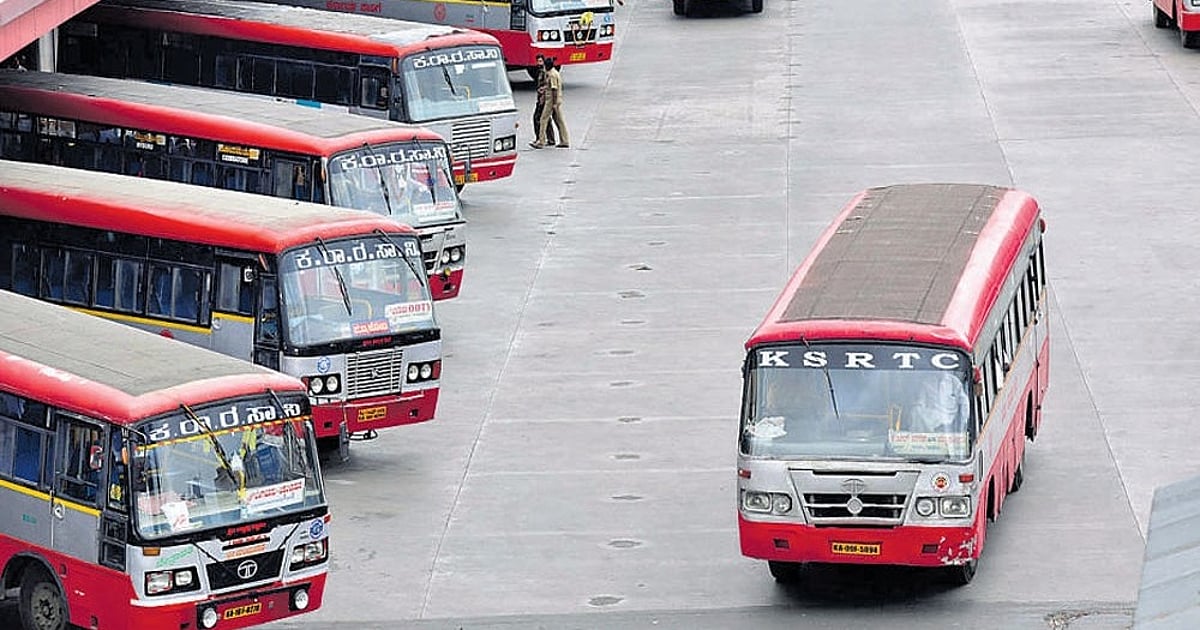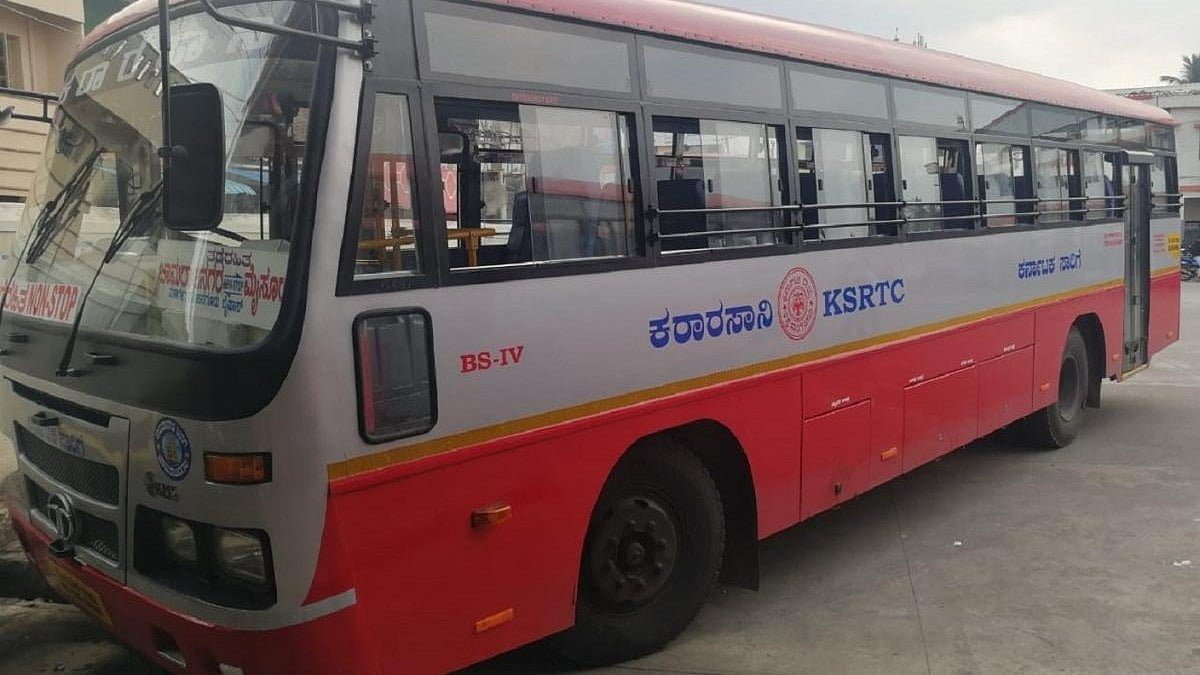Mysuru police have arrested a salesman accused of sexually harassing a female doctor during a KSRTC bus journey, sparking outrage and renewed debates on women’s safety in public transport. The incident reportedly occurred when the doctor, traveling alone on a long-distance route, was approached inappropriately by the accused, who allegedly made lewd gestures and touched her without consent.
The victim, showing remarkable presence of mind, immediately alerted other passengers and reported the incident to the bus conductor. Authorities acted swiftly on her complaint, identifying and apprehending the suspect within hours. This arrest underscores the increasing vigilance of law enforcement in responding to cases of harassment and the critical need for preventive safety measures on public transportation.
The victim’s report details the harrowing experience, emphasizing the fear and distress caused during the journey. Commuters and fellow passengers have expressed shock at the brazen nature of the assault, highlighting that such incidents compromise the safety of women in everyday spaces.
KSRTC officials stated that strict measures, including the deployment of CCTV cameras, frequent staff training, and awareness campaigns for passengers, are being reinforced to prevent future occurrences. Legal experts emphasize that rapid reporting and immediate action, as demonstrated in this case, are crucial for ensuring justice and deterring potential offenders.
The arrest has triggered wider discussions about systemic gaps in public transport security and the responsibility of transport authorities to safeguard passengers. Activists have called for stricter regulations, including emergency alert systems, dedicated helplines, and gender sensitization programs for staff and commuters.
The police have registered a formal case under relevant sections of the Indian Penal Code, and the investigation is ongoing to determine if the accused had a history of similar offenses. The swift action in Mysuru reflects a growing commitment to women’s safety while highlighting the need for continued vigilance and structural reforms to make public spaces safer for all citizens.

Public Outcry and Calls for Safety: Assault Case
The incident has led to widespread public outrage, with social media platforms buzzing with calls for stricter measures on public transport. Citizens emphasize the importance of safe commuting environments for women.
Community groups and local NGOs are urging KSRTC and state authorities to implement robust safety protocols, including emergency reporting systems and gender-sensitization training for all transport staff.
Law Enforcement Response
Mysuru police have demonstrated rapid response by arresting the accused within hours, underscoring their commitment to enforcing laws protecting women. Investigations are ongoing to determine any further involvement of the suspect.
Authorities are coordinating with KSRTC to review security measures on buses, strengthen monitoring systems, and ensure that passengers, especially women, can travel without fear of harassment.

The arrest of the salesman in Mysuru serves as a stark reminder of the vulnerability of women in public spaces and the critical need for comprehensive safety mechanisms. By combining swift legal action, enhanced monitoring, and public awareness, authorities aim to prevent such incidents in the future while fostering confidence among passengers that harassment will not be tolerated.
The incident has highlighted persistent gaps in public transport safety, particularly in long-distance buses where staff presence is limited and surveillance can be minimal. Many passengers have reported feeling anxious about traveling alone, especially during late-night routes or in sparsely populated areas. Activists argue that reliance on CCTV cameras alone is insufficient and that real-time monitoring, trained personnel, and immediate response mechanisms are essential for preventing harassment and ensuring that offenders are deterred from targeting commuters. The public discourse following this case reflects growing societal insistence on proactive safety rather than reactive measures.
Community engagement has emerged as a critical factor in combating harassment on public transport. Residents, women’s groups, and local NGOs are advocating for awareness programs that teach commuters to recognize and report inappropriate behavior. By fostering a culture where bystanders are empowered to intervene safely and report incidents promptly, authorities and communities can work together to reduce the prevalence of harassment. Such initiatives also emphasize the importance of collective responsibility in creating safer public spaces.
The role of law enforcement in this case has been widely praised, with the Mysuru police arresting the accused swiftly after the complaint was filed. This prompt action reinforces public confidence in the police’s ability to respond to gender-based crimes effectively. Legal experts note that fast-track handling of such cases, combined with strict enforcement of relevant penal provisions, can serve as a deterrent to potential offenders. The arrest sends a clear message that harassment in public spaces will not be tolerated.
Psychological trauma experienced by victims of harassment is often underestimated, and experts stress the need for support systems alongside legal action. Counseling services, medical care, and victim support programs play a critical role in helping survivors recover from the emotional impact of such incidents. Authorities and civil society organizations are increasingly recognizing that addressing the aftermath is as important as preventing the crime itself, ensuring that victims are not further marginalized by their experience.
KSRTC has stated that it will enhance safety measures across its fleet, including increased monitoring, staff training, and stricter enforcement of conduct regulations for passengers. Officials are considering implementing emergency alert mechanisms and real-time reporting systems to allow immediate police intervention when incidents occur. Such measures are designed to provide passengers, particularly women, with practical tools to protect themselves and ensure rapid assistance when necessary.
The public reaction has extended beyond Mysuru, with social media platforms and local news outlets amplifying the story. Citizens are using these platforms to call for comprehensive reforms in public transport safety, emphasizing that harassment is not merely an isolated issue but a systemic problem that demands sustained attention from authorities and the community alike. The viral nature of these discussions has increased pressure on transport operators and policymakers to act decisively.
Educational institutions have also joined the conversation, conducting workshops and awareness sessions about harassment, safety protocols, and self-defense strategies. By targeting students and young commuters, these programs aim to cultivate a culture of vigilance and preparedness from an early age. The emphasis on education complements enforcement efforts, highlighting that safety requires both structural measures and informed public participation.
The legal proceedings against the accused are expected to proceed under sections of the Indian Penal Code relating to sexual harassment and assault. Authorities are investigating whether the individual has a history of similar offenses, ensuring that any pattern of criminal behavior is identified and addressed. The case underscores the importance of thorough investigations, proper documentation, and adherence to procedural protocols to deliver justice effectively.
Witness accounts from fellow passengers have been instrumental in corroborating the victim’s statement and enabling the rapid apprehension of the accused. Their willingness to come forward demonstrates the critical role that bystanders play in both preventing and responding to harassment. Police officials emphasize that community involvement, when combined with timely law enforcement, can significantly reduce the likelihood of such crimes going unreported or unresolved.
The incident has prompted civil society organizations to urge the introduction of stricter regulations for public transport safety. Recommendations include mandatory installation of panic alarms, routine security audits, and comprehensive gender-sensitization training for drivers and conductors. Advocates argue that these measures would create safer commuting environments while reinforcing accountability for transport operators.
Public discourse around the event has also highlighted the emotional burden borne by women navigating public spaces daily. Surveys and anecdotal evidence indicate that fear of harassment influences travel choices, work schedules, and even career decisions. By addressing safety in buses and other forms of public transport, authorities can help alleviate these societal pressures and promote equal access to mobility for all citizens.
The swift legal and police response in Mysuru contrasts with other cases where delays or procedural lapses have hindered justice. Experts note that maintaining this efficiency requires adequate training, resources, and inter-agency coordination. Regular drills, rapid response protocols, and communication channels between police and transport authorities are essential to ensure that victims receive immediate assistance without bureaucratic delays.
Technological interventions, including mobile apps, GPS tracking, and panic buttons, are increasingly being considered as preventive tools. Real-time monitoring of buses allows authorities to identify suspicious behavior, track incidents as they unfold, and dispatch help immediately. These innovations complement traditional policing and provide commuters with tangible means to enhance personal safety.
Media coverage of the incident has sparked wider societal reflection on gendered vulnerabilities in public spaces. Commentators have called for a combination of legal reform, infrastructural upgrades, and public awareness campaigns to create an environment where women can travel freely without fear. The conversation emphasizes that harassment is not only a criminal issue but also a social one requiring collective cultural change.
Victims’ advocacy groups have highlighted the importance of victim-centered policing, which prioritizes the needs, dignity, and safety of survivors during investigations. Ensuring confidentiality, providing support services, and facilitating timely justice are critical to preventing retraumatization and maintaining trust in law enforcement agencies.
The Mysuru case underscores the urgent need for a systemic approach to safety in public transport. Structural measures, technological innovations, public awareness, and robust legal mechanisms must work in tandem to prevent harassment and protect vulnerable commuters. Only through comprehensive strategies can authorities create genuinely secure public spaces.
Finally, the incident serves as a cautionary reminder for commuters, transport authorities, and policymakers alike. It reinforces the imperative that vigilance, preparedness, and swift action are essential to prevent harassment. Mysuru’s rapid arrest of the accused offers a model for proactive policing, but sustained efforts, community participation, and institutional reforms remain critical to ensuring that public transport is safe for everyone.
Follow: Karnataka Government
Also read: Home | Channel 6 Network – Latest News, Breaking Updates: Politics, Business, Tech & More

